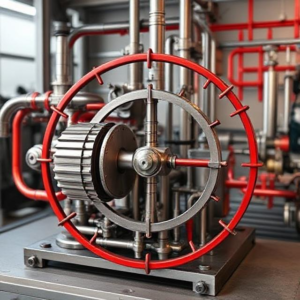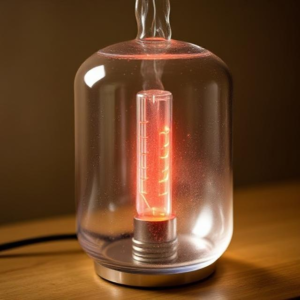1. Carnot Cycle
The Carnot Cycle is the most efficient way to convert heat into work (energy) and is used as a standard to compare other cycles. It’s an idealized, theoretical cycle with four steps:
- Isothermal Expansion: A gas absorbs heat from a hot reservoir at a constant temperature, causing it to expand.
- Adiabatic Expansion: The gas continues to expand, but now without exchanging heat with the surroundings. This makes the gas cool down.
- Isothermal Compression: The gas is compressed at a constant temperature, releasing heat to a cold reservoir.
- Adiabatic Compression: The gas is compressed further, again without heat exchange, causing it to warm up.
The Carnot cycle shows that the maximum efficiency of a heat engine depends on the temperature difference between the hot and cold reservoirs.
2. Rankine Cycle
The Rankine Cycle is used in steam engines and power plants. It’s a real-world version of the Carnot Cycle, but it’s not perfectly efficient due to practical limitations (like friction, heat losses, etc.). Here’s how it works:
- Heat Absorption: Water is heated in a boiler to turn into steam.
- Expansion (in a turbine): The steam expands and does work by turning a turbine.
- Condensation: The steam is cooled down and condensed back into water in a condenser.
- Pumping: The water is then pumped back into the boiler to repeat the cycle.
The Rankine cycle is the basis for how most of our electrical power is generated using steam.
3. Otto Cycle
The Otto Cycle is used in most gasoline engines (like in cars). It’s a cycle for spark-ignition engines, meaning it uses a spark plug to ignite the fuel-air mixture. The process has two main phases:
- Compression: The fuel-air mixture is compressed in the cylinder, making it hotter and under higher pressure.
- Power Stroke: The mixture is ignited by the spark plug, causing an explosion that pushes the piston down (this is the power phase).
- Exhaust and Intake: The exhaust gases are pushed out, and a new fuel-air mixture is sucked in to repeat the cycle.
The Otto Cycle is quick and efficient at lower speeds, which is why it’s used in most car engines.
4. Diesel Cycle
The Diesel Cycle is used in diesel engines, which are found in trucks, buses, and some cars. Unlike Otto engines, diesel engines don’t use spark plugs. Instead, the air in the cylinder is compressed so much that it gets hot enough to ignite the fuel when it’s injected. Here’s how it works:
- Compression: Air is compressed to a very high pressure and temperature.
- Power Stroke: Fuel is injected into the hot air, causing it to spontaneously ignite and drive the piston down.
- Exhaust and Intake: The exhaust gases are pushed out, and fresh air is drawn in.
Diesel engines are typically more fuel-efficient and can generate more power at lower speeds than Otto engines, which is why they’re used for heavy-duty applications.
Key Differences Between Them:
- Carnot Cycle: Ideal, theoretical cycle, used to measure maximum efficiency.
- Rankine Cycle: Steam-based power generation, used in power plants.
- Otto Cycle: Used in gasoline engines (cars), relies on spark ignition.
- Diesel Cycle: Used in diesel engines, relies on compression to ignite the fuel.
In summary:
- Carnot is the best possible cycle (theoretical).
- Rankine is used in power plants to make electricity from steam.
- Otto is for gasoline engines (like in most cars).
- Diesel is for diesel engines, more efficient and powerful for heavy-duty use.












